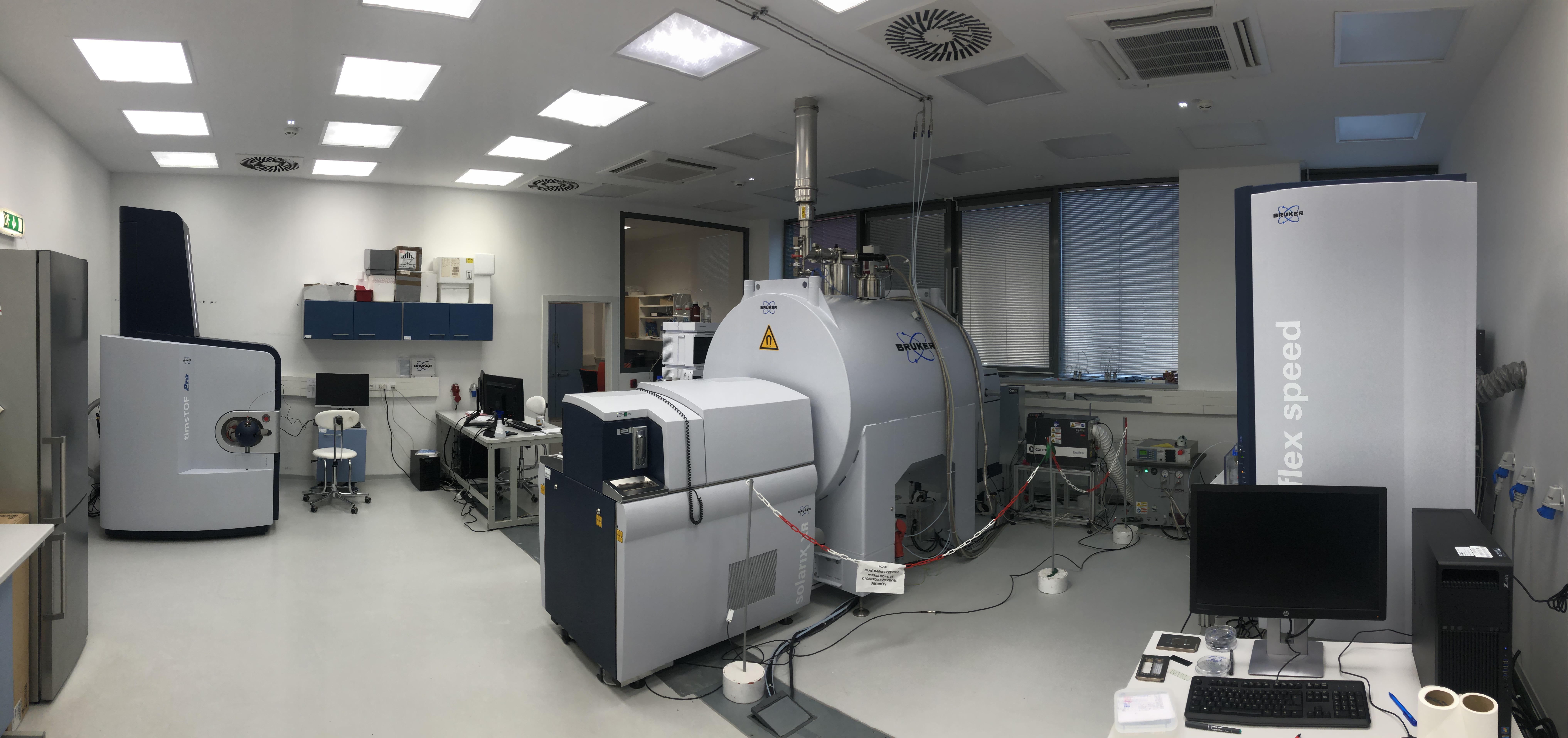Structural mass spectrometry (MS3D) offers various methodologies for characterisation of protein structure. The Institute of Biotechnology/Centre of Molecular Structure (IBT/CMS) at BIOCEV offers different labelling approaches including hydrogen/deuterium exchange, covalent labelling, chemical cross-linking and limited proteolysis. The facility is equipped with cutting-edge technologies including high-resolution mass spectrometer, HPLC system, H/D system and in-house software for data processing.
The service provided includes data processing and reporting ready for publication. The platform also offers: identification and quantification of proteins, precise determination of protein molecular mass, and characterisation of various post translational modifications.
Ultra high performance liquid chromatography system for separation of proteins, peptides or metabolites connected to the 15T-FTICR mass spectrometer.
Bruker Daltonics 15T-Solarix XR FT-ICR mass spectrometer, with electrospray and MALDI ion sources, and with Agilent Technologies 1200 HPLC system (usually coupled to the 15T-SolariX XR mass spectrometer) for the separation of complex peptide mixtures, proteins and metabolites.
Simple MALDI-TOF/TOF mass spectrometer for routine analysis of proteins and peptides.
Excimer laser dedicated mostly for FPOP experiments.
This equipment allows to provide the following services: Peptide mass fingerprinting – identification of proteins from gel or solution including larger protein mixtures; Characterization of posttranslational modification such as phosphorylation, glycosylation or disulphide bonds; Structural mass spectrometry: limited proteolysis, hydrogen/deuterium exchange, chemical cross-linking, covalent labelling; HPLC separation of peptides, proteins and small molecules (metabolites) coupled with mass spectrometric detection; Processing and interpretation of mass spectrometric data.
The instrument provides extremely high speed and sensitivity to tackle proteomes of single cells or post translational modifications in a few cells. The trapped ion mobility spectrometry (TIMS) device accumulates and concentrates ions of a given mass and mobility, enabling a unique increase in sensitivity and speed. Besides single cell proteomics, the new mass spectrometer allows high sensitive peptides and proteins identification and quantification.
Separation of protein mixtures
Intact protein analysis
Native mass spectrometry with ion mobility separation
Peptide/protein/metabolite profiling
Protein identification
Characterisation of protein modifications
Protein/metabolite quantification
Protein surface covalent labelling
Chemical cross-linking
Hydrogen/deuterium exchange (HDX)
Data processing and interpretation of mass spectrometric data
Shotgun proteomics
Hydrogen-deuterium exchange and covalent labelling experiments

